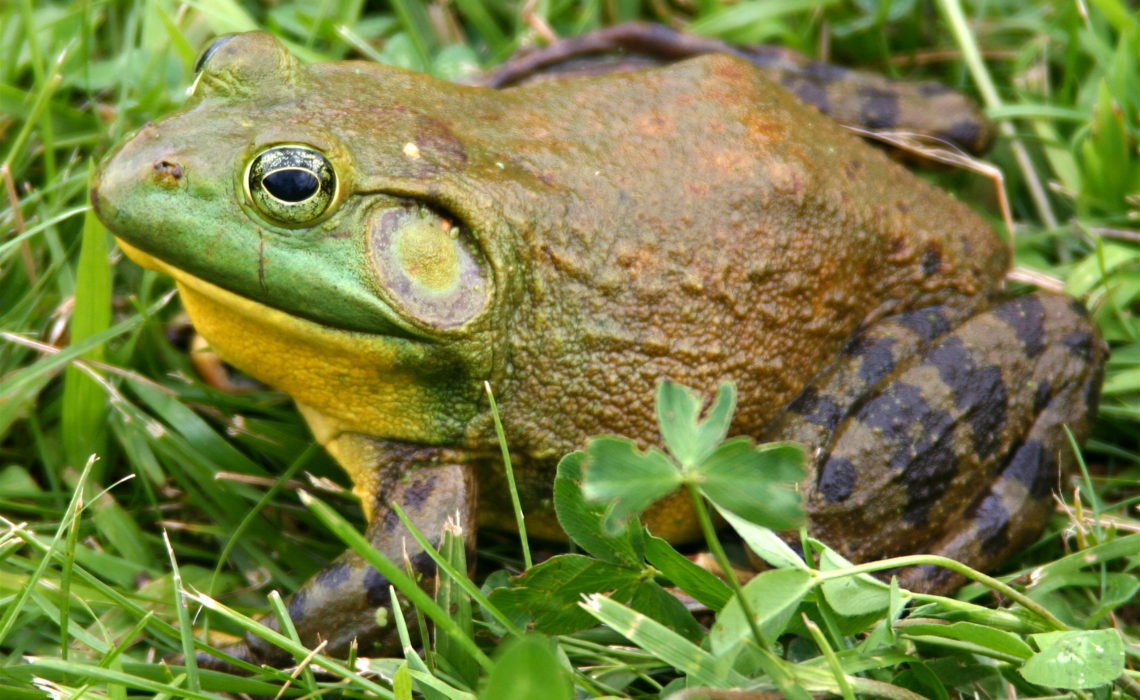
Quick. Think of predators in the wilds of Colorado.
Most people think of mountain lions, maybe a coyote, or even a bear. Big, scary animals that would strike fear not only in other animals, but even people.
But it turns out one of the most prolific predators that is menacing other critters around Boulder County is no bigger than your fist.
The American Bull Frog.
Even as I type those words, it’s hard to grasp it.
I grew up with bull frogs. As a kid in suburban Missouri, we used to frequent ponds and marshy areas. We loved scooping up mud and making mud pies. We would walk barefoot in the ponds, sometime scooping up tadpoles and putting them in clear plastic bags. I loved the feeling of the mud squishing between my toes.
Oftentimes, as the sun would wane on the horizon and my mom would yell for me to come to dinner, I would hear them. The deep bellow of the bullfrogs would serenade me as I ran home.
I thought frogs were cool. We would chase them as they hopped away from us. Of course, my friends would tease me.
“If you keep picking up those frogs, you’re going to get warts!”
But their weird slimy bodies, bug eyes, and warbling fascinated me.
Never, during that time, did I ever see them as hunters.
Turns out bullfrogs are as predatory as any mountain lion, devouring pretty much anything that crosses their path. And they aren’t discerning about what they eat either.
The American Bullfrog will eat spiders, scorpions, rodent and other small mammals, and snakes. They will even eat other juvenile bullfrogs.
But how do they do it?
Mountain lions have claws and tremendous strength. What’s the secret weapon that allows the bullfrog to be one of the most feared hunters in their environment?
It’s their enormous mouth and lightning fast tongue. I’m sure their ability to pounce on something doesn’t hurt either. I found a National Geographic video showing their innate ability to strike with their tongue, then use their legs to shovel the unsuspecting prey into their mouth. Before you knew it, the meal had been devoured.
American Bullfrogs are widespread on both the east and west coast and through the midwest. So my experience with them as kid wasn’t unique. But they are not native to Colorado.
No one can be sure how they got here — maybe introduced through stocking of lakes or people releasing pets. But once they were introduced, their numbers have surged. Turns out the tadpoles aren’t particularly appealing to animals that prey on fish or amphibians in Colorado.
These glistening green creatures are now continuing to grow in number and threaten species that are native to Colorado. According to Boulder County Parks and Open Space, animals like the Preble’s Jumping Mouse or another frog, the Northern Leopard Frog are falling prey to the might bullfrog.
What’s the answer? Unfortunately, the situation has become so desire, that they are now euthanizing American bullfrogs. While they seem impervious to being killed off naturally in the food chain, turns out that Orajel puts them to sleep forever.
So for those of you frog lovers out there that perhaps have taken in bullfrogs as pets, think twice about just letting them go in the nearest pond.
Adding something unnatural to the food chain can have disastrous consequences for the entire ecosystem.

